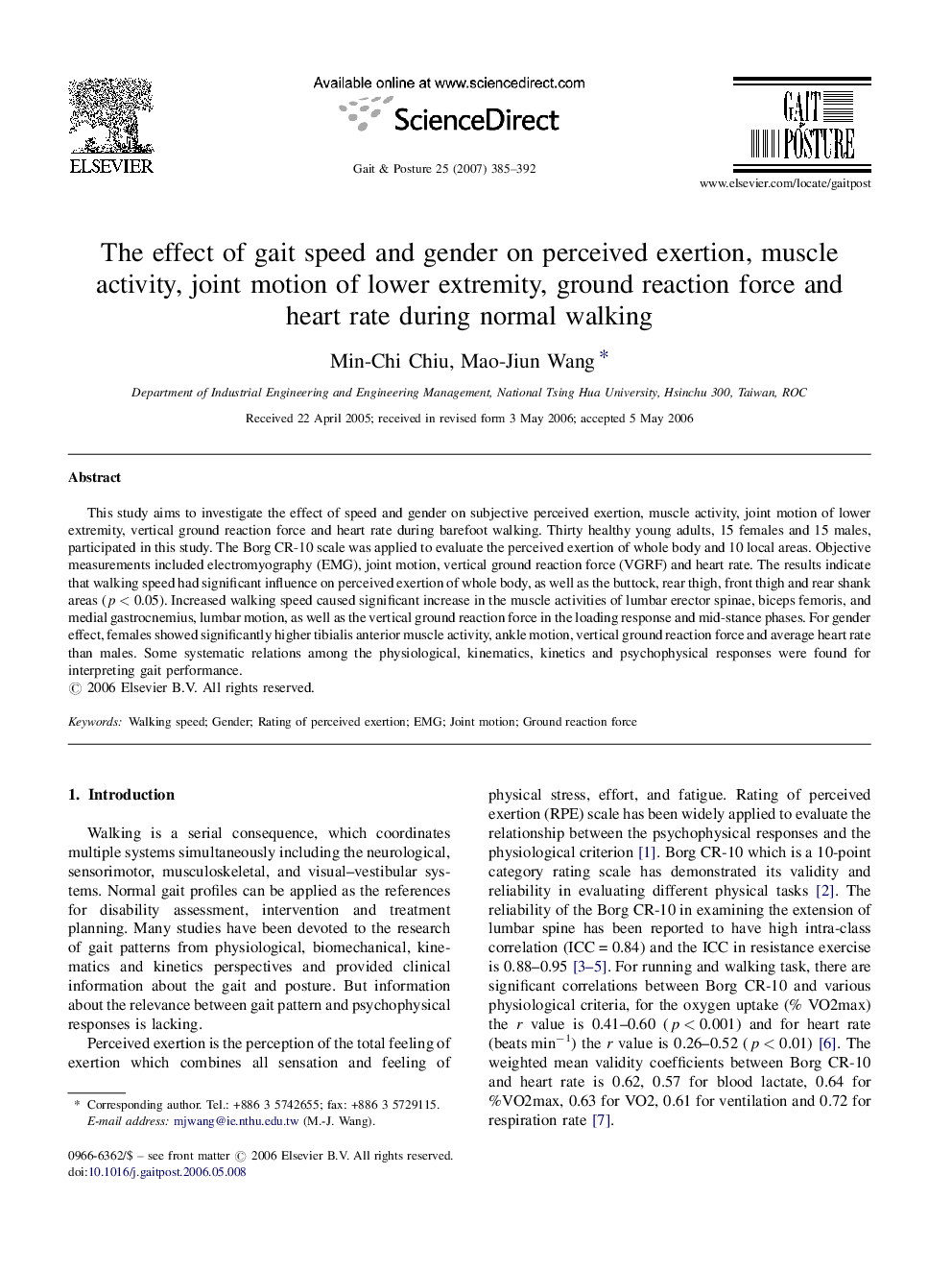| Article ID | Journal | Published Year | Pages | File Type |
|---|---|---|---|---|
| 4058217 | Gait & Posture | 2007 | 8 Pages |
This study aims to investigate the effect of speed and gender on subjective perceived exertion, muscle activity, joint motion of lower extremity, vertical ground reaction force and heart rate during barefoot walking. Thirty healthy young adults, 15 females and 15 males, participated in this study. The Borg CR-10 scale was applied to evaluate the perceived exertion of whole body and 10 local areas. Objective measurements included electromyography (EMG), joint motion, vertical ground reaction force (VGRF) and heart rate. The results indicate that walking speed had significant influence on perceived exertion of whole body, as well as the buttock, rear thigh, front thigh and rear shank areas (p < 0.05). Increased walking speed caused significant increase in the muscle activities of lumbar erector spinae, biceps femoris, and medial gastrocnemius, lumbar motion, as well as the vertical ground reaction force in the loading response and mid-stance phases. For gender effect, females showed significantly higher tibialis anterior muscle activity, ankle motion, vertical ground reaction force and average heart rate than males. Some systematic relations among the physiological, kinematics, kinetics and psychophysical responses were found for interpreting gait performance.
